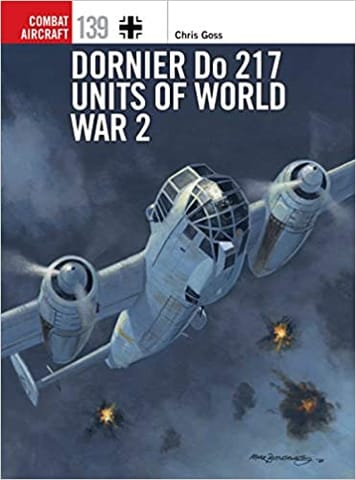A fully illustrated guide to one of the finest dive-bombers produced during World War 2, the Yokosuka D4Y "Judy." In 1938, the Yokosuka Naval Air Technical Arsenal, acting under the requirements issued by the Kaigun Koku Hombu for a Navy Experimental 13-Shi Carrier Borne specification for a dive-bomber to replace the venerable 'Val' aboard carriers. The resulting D4Y Suisei ("Comet"), codenamed "Judy" by the Allies, was initially powered by a licence-built German Daimler-Benz DB 601 inline engine as used in the Bf 109E. Despite making an inauspicious combat debut during the Battle of Midway in June 1942, the 'Judy' eventually proved to be an important asset for the IJNAF during battles in the latter years of the Pacific War. Its great successes resulted in the sinking of the escort carrier USS Princeton in an early kamikaze attack of the Philippines and the near sinking of the fleet carrier USS Franklin in a dive-bombing attack off Japan. While the Judy had an impressive top-speed, like its predecessor, and many other Japanese military aircraft, it possessed design shortcomings including inadequate armor protection for its aircrew and no self-sealing fuel tanks. As a result, when pitted against new, advanced US Navy fighters suffered horrendous losses. During the final months of World War 2 it became apparent that there would be no Japanese victory. Acting out of desperation, the IJNAF employed the 'Judy' in the dreaded kamikaze role, in which it excelled due to its high-speed characteristics. Most notably, the D4Y mounted one of the last combat actions of World War 2 when a flight of 11 Judies, personally led by the instigator of the suicide attacks, Vice Admiral Matome Ugaki, took off on a 'search mission' on August 15, 1945. This volume chronicles the action-packed wartime exploits of Japan's finest dive-bomber of World War 2.
9781472845047-Yokosuka D4Y 'Judy' Units (Combat Aircraft) Paperback
Author: Mark Chambers
Brand: Bloomsbury Publishing India Pvt. Ltd
| VARIANT | SELLER | PRICE | QUANTITY |
|---|
Description of product
A fully illustrated guide to one of the finest dive-bombers produced during World War 2, the Yokosuka D4Y "Judy." In 1938, the Yokosuka Naval Air Technical Arsenal, acting under the requirements issued by the Kaigun Koku Hombu for a Navy Experimental 13-Shi Carrier Borne specification for a dive-bomber to replace the venerable 'Val' aboard carriers. The resulting D4Y Suisei ("Comet"), codenamed "Judy" by the Allies, was initially powered by a licence-built German Daimler-Benz DB 601 inline engine as used in the Bf 109E. Despite making an inauspicious combat debut during the Battle of Midway in June 1942, the 'Judy' eventually proved to be an important asset for the IJNAF during battles in the latter years of the Pacific War. Its great successes resulted in the sinking of the escort carrier USS Princeton in an early kamikaze attack of the Philippines and the near sinking of the fleet carrier USS Franklin in a dive-bombing attack off Japan. While the Judy had an impressive top-speed, like its predecessor, and many other Japanese military aircraft, it possessed design shortcomings including inadequate armor protection for its aircrew and no self-sealing fuel tanks. As a result, when pitted against new, advanced US Navy fighters suffered horrendous losses. During the final months of World War 2 it became apparent that there would be no Japanese victory. Acting out of desperation, the IJNAF employed the 'Judy' in the dreaded kamikaze role, in which it excelled due to its high-speed characteristics. Most notably, the D4Y mounted one of the last combat actions of World War 2 when a flight of 11 Judies, personally led by the instigator of the suicide attacks, Vice Admiral Matome Ugaki, took off on a 'search mission' on August 15, 1945. This volume chronicles the action-packed wartime exploits of Japan's finest dive-bomber of World War 2.
Renting Guidelines
Specification of Products
| Brand | Bloomsbury Publishing India Pvt. Ltd |
Related products
User reviews
INFORMATION
ACCOUNT
ADDRESS
Trubrain Education India Pvt Ltd"VV Square"building, Plot.No.TS 710/1b1 & 2B1, CMC Ward No 18, Moka road, Gandhinagar, Ballari-583 101.
Bellari
Karnataka - 583101
IN
Welcome to our online bookstore, the ultimate destination for book lovers, stationery enthusiasts, and curious minds of all ages. With our extensive selection of books, including bestsellers, new releases, and used books, as well as a range of stationary, toys, and reading accessories, we have everything you need to ignite your imagination and satisfy your curiosity.
Whether you're looking for an exciting sci-fi novel, an inspiring biography, or a fun activity book for your kids, our online bookstore has it all. We offer a wide variety of genres, including fiction, non-fiction, children's books, and educational books, so you're sure to find something that sparks your interest.
In addition to traditional books, we also offer e-books for those who prefer to read on their electronic devices. And if you're looking for a more sustainable option, our used books section offers pre-owned books in great condition, helping to reduce waste and save money.
To complement our extensive book selection, we also offer a range of high-quality stationery, including art supplies, pens and pencils, notebooks, and journals. Whether you're an aspiring artist, a student, or a professional, we have everything you need to unleash your creativity and get organized.
And for those who prefer to rent rather than purchase, our book rental service allows you to enjoy your favorite books for a limited time at an affordable price.
At our online bookstore, we're committed to providing our customers with the best possible shopping experience. Our user-friendly website makes it easy to find and purchase your favorite books and stationery items, and our fast and reliable shipping ensures that your products are delivered to your doorstep in no time.
So whether you're a seasoned reader, a curious learner, or a parent looking for educational resources for your kids, we invite you to explore our selection and discover a world of endless possibilities. Shop with us today and experience the joy of reading and learning.












